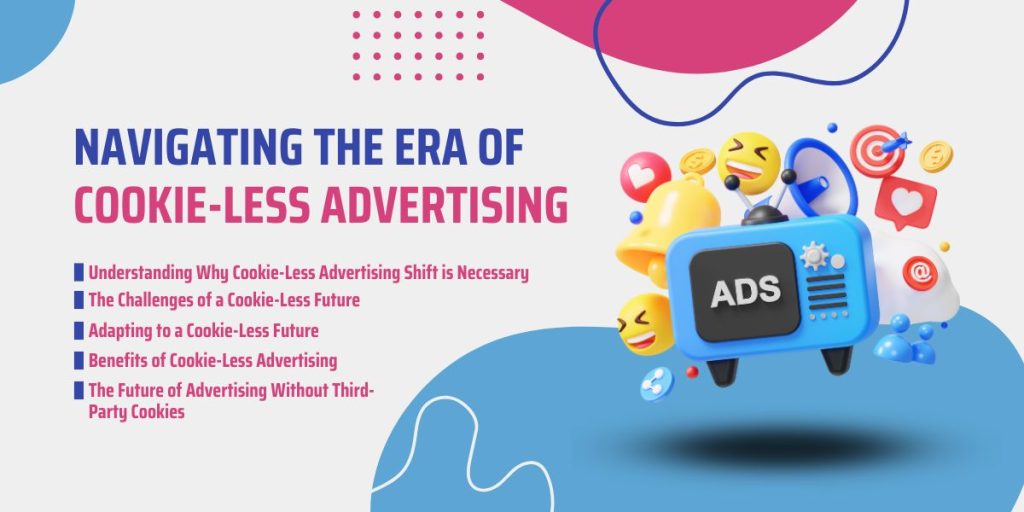How Blockchain Technology is Shaping Digital Marketing The digital marketing landscape is not steady, it is constantly evolving and changing. The new technologies are redefining how businesses connect with their...
Read More
Do you know? Apple, a premium smartphone brand has positioned itself as a leader in privacy-first marketing with its innovative feature App Tracking Transparency (ATT). Yes, you heard that right. The famous brand advocated cookie-less advertising by providing users control over app tracking. Apple, with this step has not only complied with privacy regulations but also strengthened its brand reputation in a competitive market.
Now, you must be thinking, here comes one more reason to start saving for the iPhone. Yes, it does more than just take breathtaking pictures. It keeps you secure while gathering data from you.
The digital advertising world is undergoing a noticeable transformation with the shift to cookie-less advertising. This is challenging for marketers who depend on third-party cookies for data. Admittedly third-party cookies have been the backbone of targeted ads, helping marketers track user behavior and deliver personalized experiences. But this is the 21st century and data theft is actually quite a big deal in this era which has raised the growing privacy concerns. To make users feel secure online, stringent regulations like GDPR and CCPA have pushed major tech players like Google or Apple to phase out third-party cookies.
As we steadily walk into this cookie-less future, brands must adapt their strategies, embrace privacy-first marketing, and practice secure data collection. This can be done by leveraging first-party data to maintain effective campaigns. This guide will help you understand how businesses and big brands can navigate this new landscape seamlessly.
The growing shift from third-party cookies in recent times stems from increasing concerns over user privacy and data theft. Consumers today expect brands to be more transparent about how their data collection methods. They also demand to know how and where companies are using their information. In response, privacy regulators and tech companies are enforcing stricter policies to protect user data and make them feel safe while online.
The famous search engine Google plans to phase out third-party cookies by 2024 and as discussed in the introduction Apple’s App Tracking Transparency framework signals a new era in digital marketing. These brands are successfully changing the definition of data collection while prioritizing user security and avoiding intrusive tracking methods.
While third-party cookies are disappearing rapidly, businesses can still thrive by adopting alternative strategies and tools. They can see it as transitioning from old ways to new methods by following these steps:
First-party data is authentic and more accurate data as it is collected directly from customers through owned platforms like websites, apps, and CRM systems. This data is more valuable than ever to craft personalized experiences for users. It is privacy-compliant and provides insights into customer preferences and behavior.
How to Utilize:
Contextual advertising is a new trend in advertising nowadays. This focuses on placing ads based on the content of a webpage rather than intrusively tracking user behavior. This method is relevant for successful ad placement without relying on third-party cookies.
For example, a sportswear brand can place its ads on fitness blogs or workout video platforms, to reach its targeted audiences without using cookies.
Privacy-first marketing emphasizes collecting data from users with transparency and building trust while handling that data securely. Communicate clearly to your audiences about how data is collected and used in your strategies. Utilize consent management tools to ensure compliance with privacy regulations and make users feel safe.
Advanced features and technologies, such as Google’s Privacy Sandbox and Unified ID solutions, offer better alternatives to third-party cookies while respecting user privacy. These advanced tools enable advertisers to deliver personalized solutions to users through ads without compromising user trust.
Establish direct communication and foster strong relationships with customers through engaging content, social media interactions, and through personalized email campaigns. This way you will be able to strengthen brand loyalty and reduce reliance on third-party data.
The era of cookie-less advertising is not a threat but it is an opportunity for digital marketers to rethink their strategies and be innovative while prioritizing customer relationships. Businesses that adapt early by leveraging first-party data, contextual advertising, and privacy marketing will stay in competition for long in the crowded digital space. Apple, a premium smartphone brand is the best example of this adaptation.
The cookie-less advertising is not the end of data collection and user interaction but the beginning of a new era in digital marketing. This is a wake-up call for businesses to adapt, experiment, and innovate according to evolving technologies and to prioritize user security. By embracing privacy-first marketing strategies, businesses can not only remain relevant for a long time but can also build a strong bond with customers by respecting their privacy.
Big Brands as well as small businesses should focus on ethical data practices, leverage first- and zero-party data, and adopt advanced technologies to navigate this new era successfully. As privacy becomes the topmost priority while tailoring modern marketing strategies, brands that gain customer trust and provide transparency will thrive in the competitive market.
Navigating this shift requires experimentation and innovation, but it also opens doors to building stronger, trust-based connections with your audience. This enables brands to tailor personalized experiences for users and thrive higher!
How Blockchain Technology is Shaping Digital Marketing The digital marketing landscape is not steady, it is constantly evolving and changing. The new technologies are redefining how businesses connect with their...
Read MoreBoosting SEO with Schema Markup: A Beginner’s Guide In the competitive business world, small and medium-sized businesses (SMBs) must manage customer relationships effectively to ensure sustainable growth and drive profits....
Read MoreWhy Gamification is the Next Big Thing in Customer Engagement In today’s digital space, grabbing customer’s attention and holding it is a challenge for businesses. Changing priorities of customers encourages...
Read More